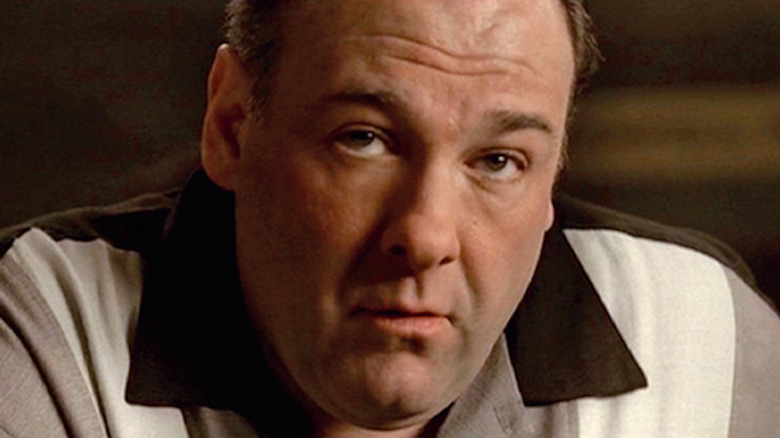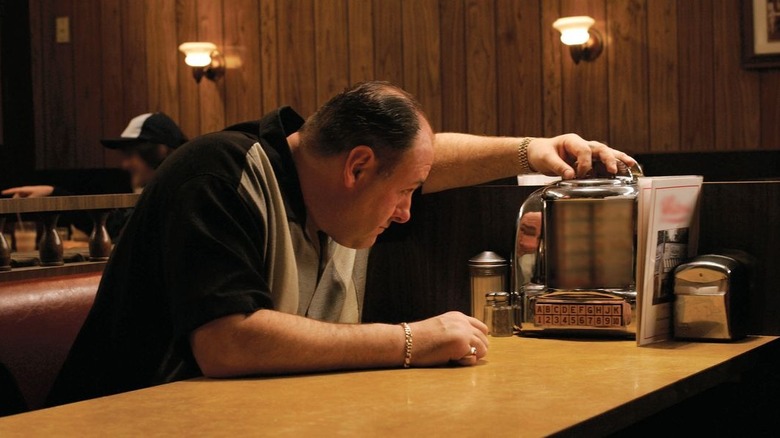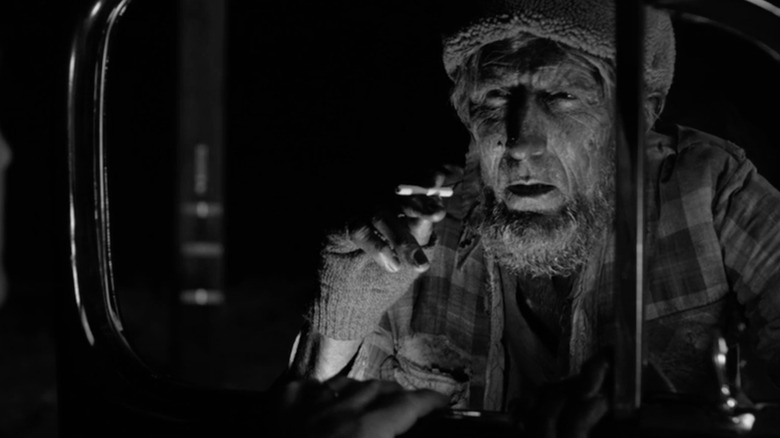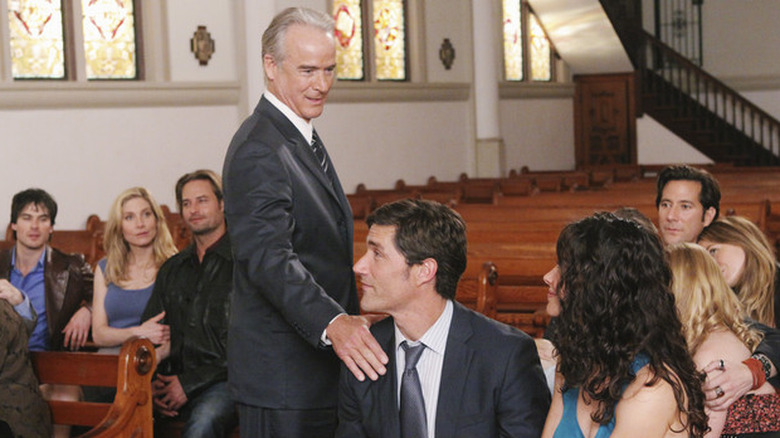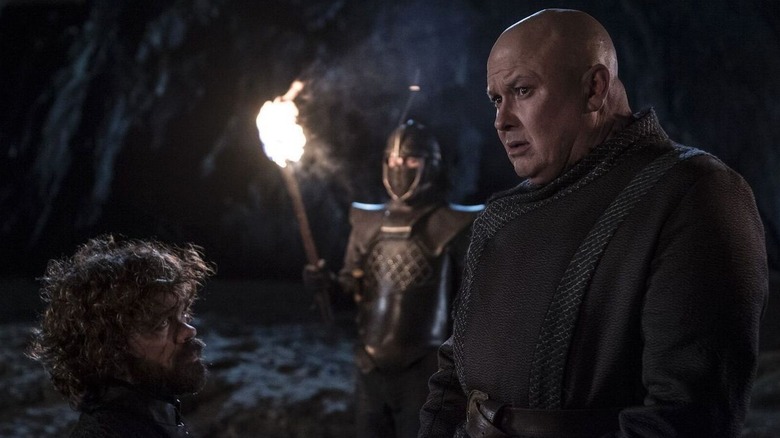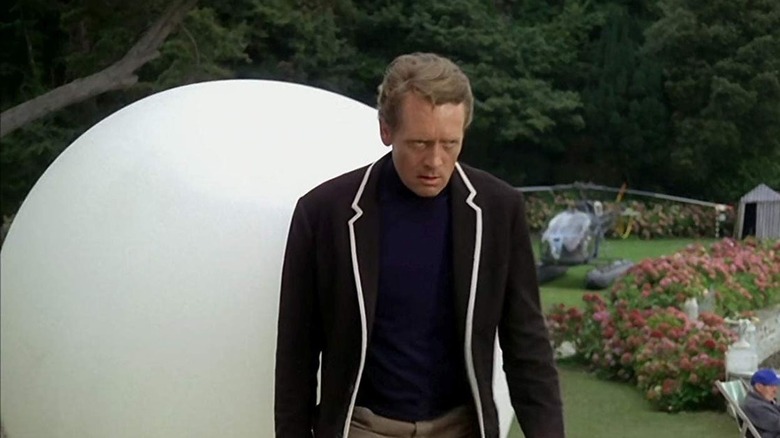The Most Misunderstood TV Moments In History
Television gets to dedicate a lot of time to telling a singular story. Because of the vast amount of minutes dedicated to a show's plot and themes, the meaning behind the show, a given scene, or series finale is clear to the audience by the time the credits roll more often than not. However, this is not always the case. A unique creative choice, bad writing, or rush to finish a series can result in viewers misunderstanding a show's intentions, plot, or themes.
Sometimes a single moment from a show is so misunderstood, the confusion leads fans to question the entirety of the series they just watched. Other times, misunderstanding a pivotal moment leads to long running debates over a beloved character's final fate. No matter the root cause or the specific effect, a misunderstood TV moment can fundamentally alter a fan's relationship to their favorite show. So in an effort to help clear up some questions and shed a light on the most misunderstood moments in TV history, check out this helpful guide.
Warning: major spoilers throughout.
The blackout heard round the world
For six seasons, "The Sopranos" had audiences glued to their TV screens with its ongoing depiction of the life and times of New Jersey mob boss Tony Soprano. For the uninitiated, it's often hailed as the greatest show of all time. However, the final episode of "The Sopranos," "Made in America," had audiences screaming at their television.
In the series' final scene, Tony waits for his family to gather for dinner in a diner. As each family member trickles in, the camera takes Tony's perspective and begins to linger on suspicious looking men entering the diner as well. As the scene unfolds, the background music swells to a crescendo resulting in a palpable sense of dread. Then the screen cuts to black before credits roll. At the time, viewers believed their cable had cut out during the show's pivotal moment.
In the fifteen years since its closing moments, fans debated if the cut to black meant Tony was alive or dead. The debate seemed endless until a 2021 interview between series creator David Chase and The Hollywood Reporter. In the interview, Chase explained he always intended for the show to end with Tony's death. He also said felt the finale didn't need to show the death — in fact he previously told The New York Times that wasn't the point of the scene. While "The Sopranos" will always be remembered for ambiguous storytelling, at least the debate over Tony's death is finally sleeping with the fishes.
The Woodsmen are scarier than reason
Anyone familiar with "Twin Peaks," David Lynch's surrealist fever dream of a series, shouldn't be surprised to find an episode on this list. "Twin Peaks" follows Agent Dale Cooper's investigation into the murder of teenager Laura Palmer in the titular town. Over the course of its run time, "Twin Peaks" zigs and zags between real world and supernatural horrors. However, none of these moments are as hard to understand as Episode 8 from the show's third season.
Episode 8 doesn't make much sense upon first viewing. The sound design is purposefully distorted and horrifying. The episode jumps through time seemingly at random. And it culminates by delivering terrifying boogeymen in the "Woodsmen" and a recreation of atomic bomb tests from 1945. However, it also contains an origin story for series antagonist Killer BOB and tons of other references to the show's extensive mythology.
While Lynch never makes the episode's meaning obvious, there's certainly a case to be made that it depicts the birth of the show's evil. The show's imagery, like so much of Lynch's work, drops hints towards its meaning. By placing the invention of weapons of mass destruction alongside brief moments of the show's mythology, Lynch draws a bridge between the show's malicious forces entering its world and one of mankind's darkest hours. Like the worst parts of human history, "Part 8" is dark, noisy, disturbing, and makes witnesses want to shout: "why?"
Purgatory this ain't
In the 2000s, "Lost" followed the marooned Oceanic Flight 815 crash survivors' attempts to survive on a mysterious island. It was an enormous hit. However, when the finale aired in May of 2010, most viewers left asking themselves one question: Was the island purgatory?
In its final scenes, the show cuts between alternate timelines. In one timeline, series protagonist Jack succumbs to his wounds from a battle to save the world. In the other timeline, the main characters gather in a church to leave for the afterlife together. Finally, after all of this build up, the show ended on a lingering image of the original crash site — only it was completely deserted.
For years, fans suspected the final scenes meant the show had been a metaphor for purgatory. For many, the shot of the empty crash site following Jack's departure for the afterlife with the other survivors signaled the show was about trapped souls. Fans also took this to mean no one survived the initial crash.
According to Vulture, showrunner Damon Lindelof confirmed the island wasn't purgatory and that the show's events had all actually occurred as depicted. Lindelof was concerned the impact of the ending would be ruined if it was followed by a commercial, so he added the last scene to give the audience a moment with their emotions. In the end, the main cast leaving for the next life together highlighted the show's true focus: The ways people come together when they're lost.
Worst laid plans...
For seven seasons, audiences tuned into "Game of Thrones" for its unique brand of high fantasy and realpolitik. The show gave viewers plenty of interesting characters to root for and against, but Lord Varys, the ruthless spymaster with a heart of gold proved especially intriguing. Going into the final season, most assumed Varys had a major role to play in the end game.
So when Varys got caught in an obvious plot to undermine Daenerys Targaryen's ascension to the throne and was executed for his betrayal, folks were stunned. His plan? Send letters containing information that would negate Daenerys' claim to the throne, in broad daylight, from a castle surrounded by guards.
While Varys' stupid plan isn't hard to understand and his death served the greater plot, the way it happened seemed rushed to most fans. Interviews with "GoT" book series author George R.R. Martin and his agent, Paul Haas, from a book titled "Tinderbox" by James Andrew Miller (via Business Insider), reveal that Martin was hoping the show would last ten seasons instead of eight. Haas told Miller that the showrunners David Benioff and D.B. Weiss, "were done, and wanted to move on." So while fans may never know exactly why the last season went the way it did, it's likely moments like Varys' death were symptomatic of Benioff and Weiss' desire to wrap it up. Condensing the ending traded the show's slow-burn for rapid plot development and one of its smartest characters went out like a fool.
A prison without a guard
Patrick McGoohan's 1967 cult classic "The Prisoner," is entertaining, surreal, thought provoking, and finished with a finale so misunderstood the show is still discussed to this day. "Prisoner" follows a retired spy who's kidnapped and placed in an open air prison resembling an idyllic town. When captured, McGoohan's prisoner is assigned the title Number 6. The show follows Number 6's attempts to escape, efforts to avoid giving up information to his captors, and ongoing search for the villainous prison warden, Number 1.
Sounds like pretty standard fare right? Wrong. "The Prisoner" is essentially the antithesis of spy stories like "James Bond." The villains never lay out their plots or what information they're specifically trying to collect and no one threatens to blow up the world once. Due to all the mystery, fans assumed the finale would deliver answers to the series' most pressing questions.
But instead of ending with any explanation at all, the show ends with McGoohan's central prisoner offing a bunch of bad guys, escaping back to his home in London, and finally driving his car into the distance. The finale didn't address any of the show's central mysteries like the identity of Number 1 or the reason behind the prison. Fans were flabbergasted. But "The Prisoner" was never intended to be a run of the mill spy thriller, instead it set out to depict an absurdist investigation of freedom. In the end, the show was about the ways we trap ourselves and asks if anyone's really free.
